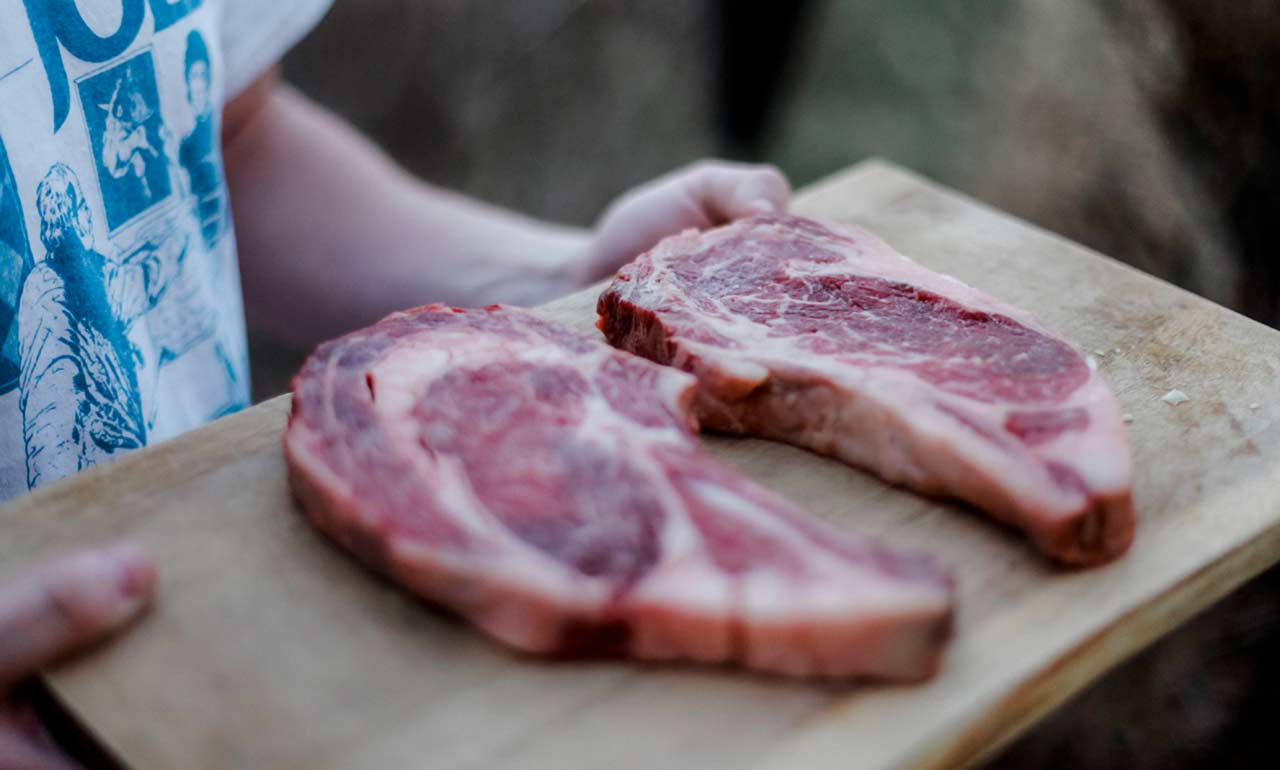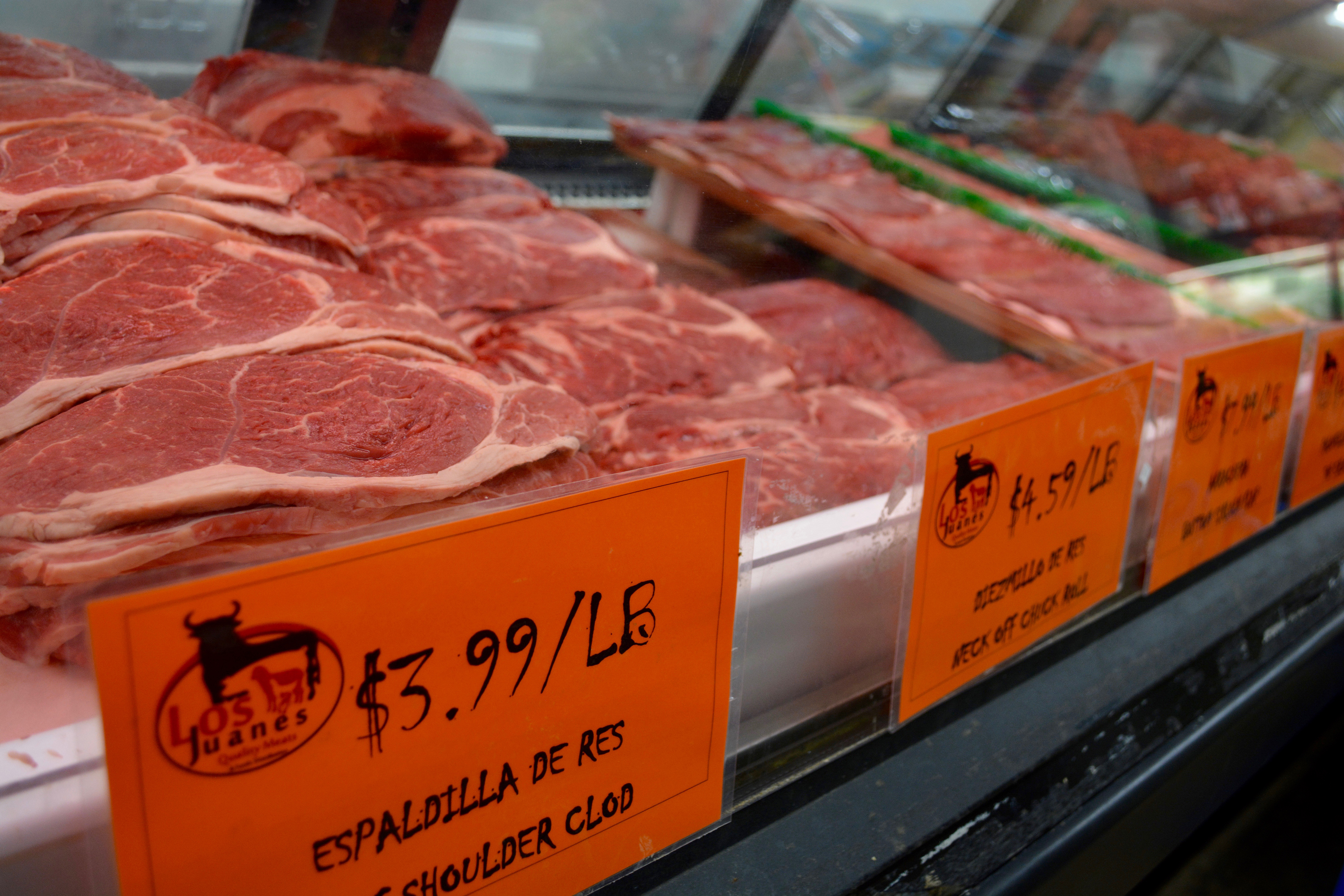Explore the Local Flavor at Bagley Farms Meat Market Edwardsville IL: Fresh and Delicious
Explore the Local Flavor at Bagley Farms Meat Market Edwardsville IL: Fresh and Delicious
Blog Article
Discover the Art of the Butcher's Cut in a Modern Meat Market
In the ever-evolving landscape of modern-day meat markets, the butcher's cut has actually transcended its typical origins, combining old-time workmanship with modern methods. Today's butchers are not simply processors of meat; they are experienced artisans who emphasize sustainability and ethical sourcing. Their know-how in picking and preparing cuts tailored to particular culinary needs supplies an unrivaled dining experience. Yet, what really sets the modern-day butcher apart is their capacity to create a deeper link in between consumers and the origins of their meat. How do these masters equilibrium custom with development, and what implications does this have for the future of meat intake?
Development of Butchery Techniques
The advancement of butchery methods mirrors a rich tapestry of technology and adaptation driven by advancements in modern technology, modifications in consumer demand, and a much deeper understanding of meat science. Historically, butchery was a craft gave via generations, with methods honed over centuries to optimize yield and flavor. Nonetheless, the industrial change ushered in mechanization, changing conventional techniques and enabling massive handling.
The mid-20th century saw butchery techniques even more improved by clinical insights into muscular tissue biology and meat aging, enhancing both tenderness and preference. Technologies like vacuum packaging and refrigeration prolonged item shelf-life, allowing butchers to diversify offerings and enhance top quality control. This duration also marked the increase of specific devices, such as band saws and meat slicers, which raised precision and efficiency in meat handling.

Electronic systems now aid in monitoring pet provenance and enhancing cuts to satisfy certain client choices. In addition, a resurgence in artisanal butchery has actually emerged, mixing typical skills with modern expertise to provide to consumers looking for honest and sustainable meat choices.
Understanding Meat Cuts
Understanding the details of meat cuts is crucial for both butchers and consumers looking for high quality and value. Each cut comes from a different component of the animal, presenting special flavors, structures, and cooking approaches - bagley farms meat market edwardsville il. Proficiency of these differences not just enhances cooking experiences but additionally makes the most of the energy of each carcass. For butchers, accurate cuts show ability and respect for the craft, making certain very little waste and optimum yield.

Understanding muscle make-up is crucial; muscular tissues utilized much more regularly by the pet have a tendency to be tougher and are best matched for slow-moving cooking methods, while less-used muscular tissues, like those discovered in the click over here now loin, are much more tender and suitable for barbecuing or roasting. Familiarity with these differences empowers customers to make educated choices, boosting their culinary ventures.
Selecting Top Quality Meat
Choosing the ideal meat involves more than simply selecting a visually attractive item from the display screen. The art of choosing high quality meat requires a discerning eye and understanding of details characteristics that symbolize quality and quality.
Second of all, think about the marbling, which refers to the white flecks of fat within the muscle mass. Correct marbling is an essential indicator of inflammation and flavor, as it thaws during cooking, boosting the meat's juiciness. Bear in mind, greater marbling typically correlates with premium high quality cuts, such as USDA Prime.
Structure is an additional critical factor; meat must feel firm to the touch, not slimy or overly soft. Additionally, bear in mind the fragrance. Fresh meat must have a tidy, neutral scent, free from any sour or off-putting odors.
Matching Cuts With Cooking Methods

Alternatively, tougher cuts like brisket and chuck roast are abundant in collagen, which damages down into gelatin when prepared gradually. These cuts are perfect for braising or sluggish roasting, permitting the meat to soften in time and establish deep, intricate tastes. Similarly, cuts such as short ribs and pork shoulder prosper with slow-cooking approaches, where extended cooking times transform their robust structures right into delicious dishes.
Lamb shanks and oxtail, which need extended food preparation to soften, are excellent prospects for cooking or slow simmering. These methods coax out rich, hearty flavors while maintaining wetness. By comprehending the special attributes of each cut, cooks and home chefs alike can raise their cooking developments, ensuring each dish is both satisfying and memorable.
The Butcher's Role Today
Browsing the progressing landscape of the contemporary meat market, the butcher's role today expands past mere preparation of cuts. Contemporary butchers are cooking artisans, educators, and supporters for sustainable techniques. They connect the gap in between the farm and the fork by ensuring moral sourcing, comprehending pet husbandry, and prioritizing transparency in the supply chain. This change reflects the expanding consumer need for high quality over quantity, where provenance and pet welfare are extremely important.
In addition to crafting exact cuts, butchers now involve straight with clients, offering cooking recommendations and tailoring options to suit specific needs and choices. Their competence in meat site link aging, marbling, and taste profiles equips consumers to make educated choices, boosting their culinary experiences. This check that individualized solution exemplifies the butcher's progressing duty as a trusted expert in the kitchen.
Additionally, butchers are pivotal in reducing waste, making use of entire animals to produce varied items such as sausages and stocks. This detailed strategy not only respects the animal yet additionally aligns with contemporary sustainability goals. By doing this, the modern butcher symbolizes both practice and technology, adapting to an ever-changing market while preserving the artistry and stability of their craft.
Final Thought
Proficiency in comprehending varied meat cuts and high quality signs equips butchers to supply educated suggestions, aligning details cuts with optimum cooking methods. By honoring historical practices while welcoming contemporary demands, the butcher's duty stays important in today's sophisticated meat market.
Report this page